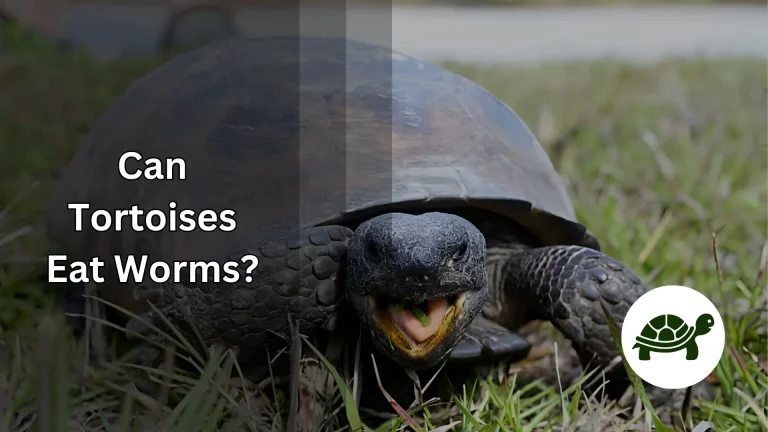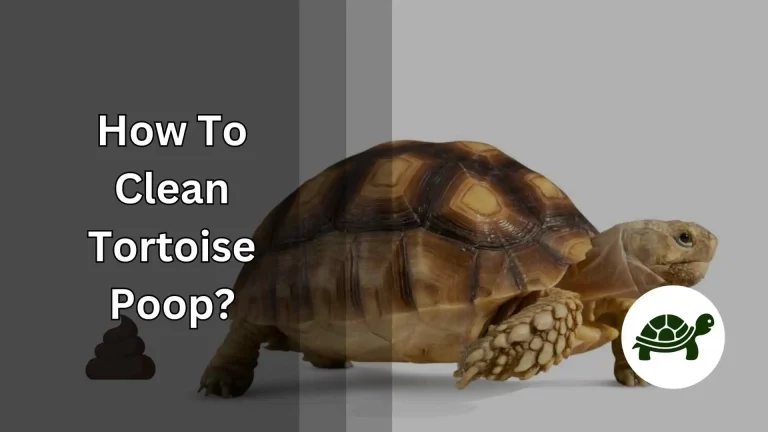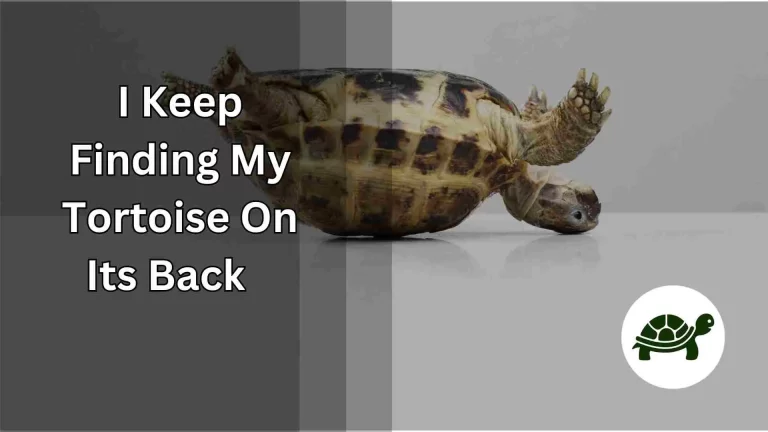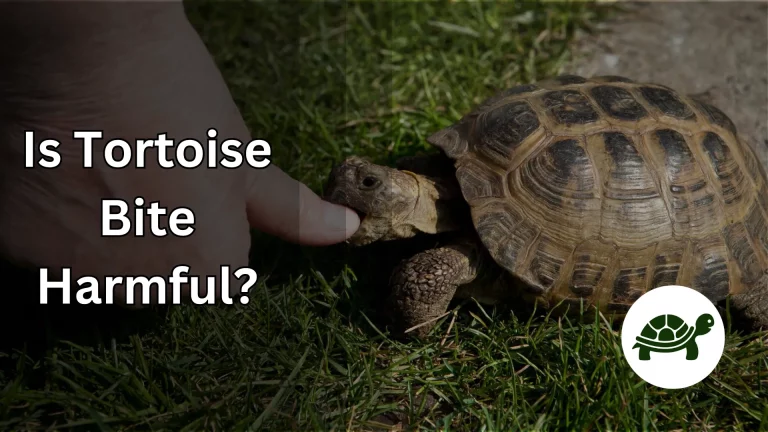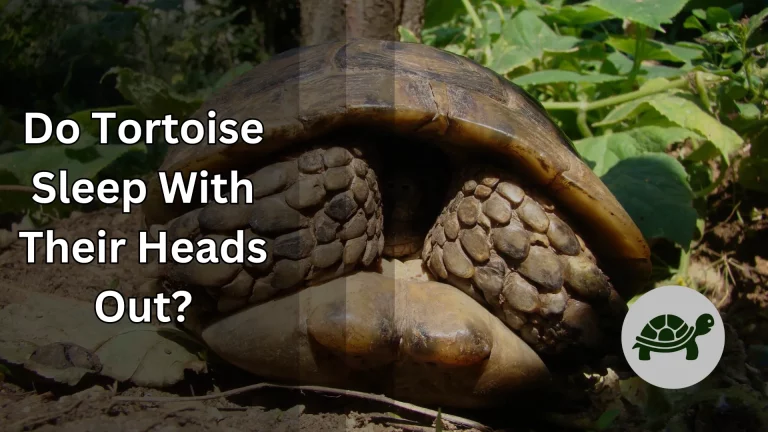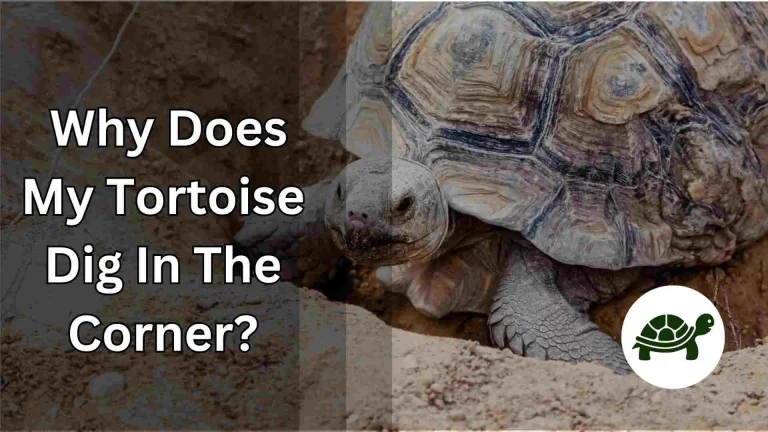What Watt UVB Bulb For Tortoise? – All You Need To Know
When it comes to creating a comfortable and health-boosting environment for your shelled friend, lighting plays a crucial role. UVB lighting isn’t just about illuminating your tortoise’s habitat; it’s vital for their well-being. For many tortoise owners, especially beginners, the question arises: What watt UVB bulb is suitable for my tortoise? Dive into this guide as we shed light (pun intended!) on the importance of UVB, how it benefits your tortoise, and how to choose the right wattage to ensure your pet thrives.
While wild tortoises naturally soak up the sun’s rays, captive tortoises depend on us to replicate this essential element. Making the right lighting choice can significantly impact their growth, mood, and overall health. Understanding wattage and its implications is not just about equipment—it’s about caring responsibly for a life that trusts you.
We’ll explore the nitty-gritty of UVB wattages, factors that influence your choice, and some key considerations to keep your tortoise basking happily. Whether you’re setting up a new habitat or reassessing your current setup, let’s ensure you’re well-informed and equipped to make the best decision.
Why UVB Lighting is Essential for Tortoises?
Tortoises, magnificent creatures that roamed the earth long before us, have evolved to thrive under the sun’s natural embrace.

In their wild habitats, these gentle reptiles have grown reliant on the sun’s ultraviolet B (UVB) rays, making UVB lighting an absolute necessity in captivity. But why exactly is this so important?
Vitamin D3 Synthesis
The primary role of UVB lighting in a tortoise’s life is aiding in the synthesis of Vitamin D3. Without adequate UVB exposure, tortoises can’t effectively process the calcium in their diet. This synthesized Vitamin D3 is crucial because it helps in the absorption and metabolism of calcium, ensuring that our shelled friends have strong, healthy bones and a hardy shell. In the absence of natural sunlight, this vital process is hindered, which can lead to severe health implications.
Preventing Metabolic Bone Disease (MBD)
This is where the importance of UVB lighting truly shines. MBD is a common ailment in captive tortoises deprived of sufficient UVB. Symptoms range from soft shells and weakened bones to more severe cases of deformities and paralysis. By providing the right UVB lighting, you’re not just ensuring your tortoise has a sunny spot; you’re actively preventing a debilitating condition.
Regulating Biological Rhythms
Beyond bone health, UVB lighting plays a role in regulating the circadian rhythms and seasonal behaviors of tortoises. Proper lighting can influence their appetite, mood, and breeding behaviors. It helps mimic their natural environment, offering a sense of familiarity and comfort in a captive setting.
In essence, while basking might look like a leisurely activity, it’s a lifeline for tortoises, a silent dance of nature ensuring they remain in optimal health. As tortoise guardians, understanding and providing the right UVB lighting is one of the most profound ways we can recreate a slice of their wild habitats within our homes.
Factors Determining the Right Wattage
Venturing into the world of UVB bulbs can sometimes feel like navigating a maze. Various wattages, brands, and types might leave you overwhelmed. But fret not! When it comes to determining the correct wattage for your tortoise’s UVB bulb, a few key factors will guide your decision, ensuring your tortoise bathes in the perfect glow.
1. Size of the Enclosure
Much like how a single lamp might not illuminate an entire room, the size of your tortoise’s enclosure plays a pivotal role in choosing the UVB bulb’s wattage. A larger space requires a higher wattage to ensure UVB rays reach every nook and cranny. Conversely, for smaller habitats, a lower wattage might suffice, preventing the risk of overexposure.
2. Species of Tortoise
Not all tortoises are created equal, at least when it comes to their UVB requirements. Some species hail from sun-drenched regions and naturally require more UVB, while others, from shadier environments, might need less. Researching your specific tortoise species will offer insights into their natural habitat and, consequently, their UVB needs.
3. Distance from the Bulb to the Basking Spot
Imagine sunbathing. The closer you are to the sun (like during summer), the more intense the heat and UV exposure. Similarly, the distance between your tortoise’s basking spot and the UVB bulb affects the intensity of the rays received. If the basking area is closer to the bulb, you might opt for a lower wattage to avoid overexposure, and vice versa.
4. Other Light Sources
If your tortoise’s enclosure is positioned near a window or another light source, it might already be receiving some amount of UVB. However, remember that most regular window glasses filter out a significant portion of UVB rays. Still, the presence of additional light can factor into your wattage decision.
In conclusion, finding the right UVB wattage isn’t just about numbers. It’s a blend of understanding your tortoise’s individual needs and their living environment. With a bit of research and observation, you can ensure your shelled friend enjoys a sunlit ambiance that mirrors their natural world, promoting health and happiness.
Common Wattages and Their Applicability
As you embark on the journey to find the perfect UVB bulb for your tortoise, you’ll quickly discover that the market offers a variety of wattages. But, much like a shoe isn’t one-size-fits-all, neither are UVB bulbs. It’s essential to understand the common wattages available and where they best fit in your tortoise’s world.
1. 10 Watt
Often dubbed the ‘starter’ bulb, 10 Watt UVB bulbs are ideal for smaller enclosures or juvenile tortoises. They provide a gentle introduction to UVB exposure, ensuring that your young or small-sized tortoise gets the essential rays without the risk of overexposure. Perfect for habitats that are more vertically limited, where the basking spot is relatively close to the bulb.
2. 13 Watt
The middle-ground in the UVB wattage world, the 13 Watt bulbs, are versatile and suit a wide range of enclosures. They offer a balanced UVB output, making them a popular choice among many tortoise enthusiasts. Whether you have a medium-sized habitat or a species with moderate UVB requirements, this wattage might just hit the sweet spot.
3. 26 Watt (or higher)
For the sun-lovers among the tortoise species or those in expansive enclosures, a higher wattage bulb is the way to go. Bulbs in this range ensure that UVB rays penetrate further and cover larger areas, mimicking the intense sun of open terrains and deserts. However, always monitor for signs of overexposure, especially if the basking spot isn’t sufficiently distanced from the bulb.
Pro Tip: Remember, wattage alone doesn’t dictate the effectiveness of a UVB bulb. The quality and brand can play a significant role. Always choose trusted brands known for their reliability and accurate UVB output. Over time, even the best bulbs can see a reduction in their UVB emission, so regular checks and timely replacements are a must.
In the end, understanding these common wattages and their applicability helps you make an informed choice, ensuring your tortoise gets the optimal UVB exposure they deserve. By aligning wattage with their specific needs and environment, you’re on the path to creating a sunny haven for your shelled friend.
How to Position Your UVB Bulb Effectively
So, you’ve chosen the perfect wattage for your tortoise’s UVB bulb. Great! But positioning it correctly is just as pivotal. Think of it as having the best sunblock but applying it unevenly – you’d still risk sunburn in some areas.
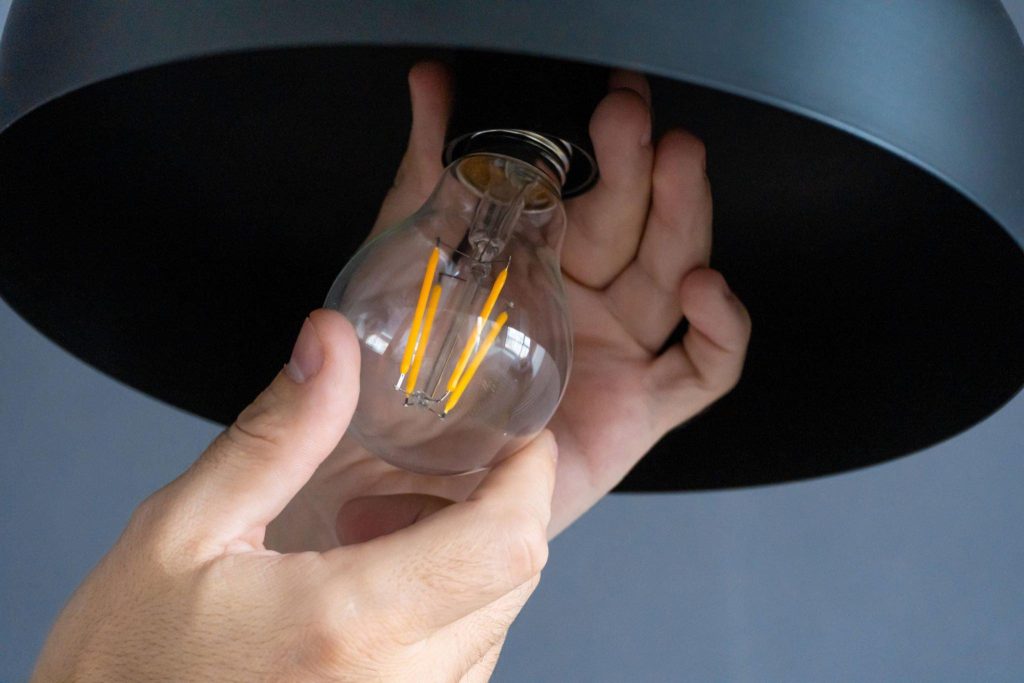
Similarly, the effectiveness of a UVB bulb isn’t just in its wattage but also in its placement. Let’s explore how to ensure your tortoise gets the most out of that glowing bulb.
1. Avoid Obstructions
It might seem like a no-brainer, but it’s essential to remember that UVB rays can be blocked by obstructions. Whether it’s a mesh top, plastic cover, or even glass, these barriers can filter out a significant amount of UVB. Position the bulb in such a way that its rays directly reach the tortoise without any obstructions in between.
2. Optimal Distance
Too close and it’s too intense; too far and it might not be effective. The distance between the bulb and the basking spot is a balancing act. Generally, depending on the bulb’s wattage, a distance of 10 to 12 inches is recommended. However, always refer to the bulb manufacturer’s guidelines and monitor your tortoise for any signs of discomfort or overexposure.
3. Across the Gradient
An effective tortoise habitat has a temperature gradient, with a warmer basking spot at one end and a cooler area at the other. Position the UVB bulb over the basking area but ensure its light spills across a significant portion of the enclosure. This setup allows your tortoise to self-regulate, moving between areas of high and low UVB exposure as needed.
4. Angle and Spread
Directly overhead isn’t always the best. Sometimes angling the bulb slightly can provide a broader spread of UVB, ensuring that even if your tortoise isn’t directly under the basking spot, they’re still benefitting from the UVB exposure.
5. Reflectors are Your Friend
Consider using a reflector with your UVB bulb. Reflectors can enhance the effectiveness of the bulb by directing and focusing the UVB rays downwards, ensuring minimal wastage and maximum benefit for your tortoise.
Positioning is key. By thoughtfully setting up the UVB bulb, you’re not just ticking off a checklist; you’re sculpting an environment that mimics the natural world for your tortoise. And in that familiar warmth and light, they’ll thrive, bask, and flourish.
Duration of UVB Exposure
Basking under the sun’s rays is a ritual many of us, including our shelled friends, savor. But just as we wouldn’t want to be under the blazing sun all day, tortoises too need a balance.

The duration of UVB exposure, much like its intensity, is paramount for their health and well-being. So, how long is too long, and what’s just right?
1. Mimicking Natural Daylight
Nature, in all its wisdom, has designed tortoises to follow the rhythm of the sun. Aim to replicate the natural daylight hours of their native habitat in your enclosure. On average, providing 10-14 hours of UVB light during the summer and reducing it to 8-10 hours during winter can be an effective guideline.
2. Balance is Key
Continuous UVB exposure can be just as detrimental as too little. Tortoises, in the wild, move between shaded areas and sunny spots, regulating their exposure. Ensure that your enclosure offers such variety, allowing them to self-regulate their UVB intake based on their comfort.
3. Monitor and Adjust
Every tortoise, like us humans, is an individual. Some might enjoy longer basking periods, while others might prefer shorter stints under the UVB light. Observe their behavior. If they’re always hiding from the light, it might be an indication that the duration or intensity is too much.
4. The Role of Timers
In our busy lives, ensuring the light goes on and off at the same time daily can be challenging. Invest in a reliable timer for your UVB bulb. Not only does it ensure consistency, but it also helps in creating a stable circadian rhythm for your tortoise, promoting better health and stress reduction.
5. Remember Natural Sunlight
If you occasionally let your tortoise bask in natural sunlight, remember to adjust their artificial UVB exposure. Natural sunlight is far more potent, and even short durations can be highly beneficial. However, always ensure they have shaded areas to retreat to when outside.
In the end, UVB exposure isn’t just about switching on a light. It’s about recreating the ebb and flow of sunlight, offering your tortoise a slice of the wild in their captive environment. With careful observation and understanding, you can ensure they get the right amount of this golden elixir, paving the way for a vibrant, healthy life.
Signs Your Tortoise Isn’t Getting Enough UVB
The radiant dance of UVB rays is invisible to our eyes, but for our tortoises, it plays a tune of health and vitality. However, if your tortoise isn’t grooving to this tune, it might be a sign they’re not getting enough UVB.

Recognizing these signs early can prevent potential health issues and ensure that your tortoise continues to thrive under your care.
1. Soft Shell
One of the most telling signs of UVB deficiency is a soft shell. A tortoise’s shell should be firm and robust. If it feels pliable when gently pressed, it’s a clear indicator that they’re not synthesizing enough Vitamin D3, affecting their calcium metabolism.
2. Lethargy
A tortoise deprived of adequate UVB might appear more sluggish than usual. While tortoises aren’t known for their speed, a marked decrease in activity and an increased desire to hide can be red flags.
3. Appetite Changes
Just like humans, tortoises can exhibit changes in appetite when something’s amiss. A decreased appetite, or being picky about food, can often be linked to inadequate UVB exposure.
4. Abnormal Growth
Young tortoises should exhibit steady growth. However, if they’re not getting enough UVB, their growth can be stunted, or they might grow in a deformed manner, leading to issues like a pyramided shell.
5. Muscle Weakness
UVB plays a role in overall muscle health. If your tortoise seems to struggle with movements or appears weaker, it’s time to reassess their UVB setup.
6. Behavioral Changes
Beyond the physical signs, behavioral shifts can also indicate UVB deficiency. If your once-curious tortoise suddenly seems disinterested or exhibits unusual behaviors, consider it a call to action.
Addressing a UVB deficiency is more than just correcting a lighting issue; it’s about restoring the balance in your tortoise’s world. By staying vigilant and observing these signs, you become the silent guardian of their health, ensuring that the sun always shines bright in their world, even if it’s from a bulb.
Replacing UVB Bulbs
Ah, the joy of seeing your tortoise bask under the UVB bulb, absorbing those essential rays! But like all things, UVB bulbs have a lifespan, and even if they’re still shining bright, they might not be delivering the UVB goodness as efficiently.

Timely replacement is vital to ensure your tortoise continues to bask in optimal health. But when and how should you go about it?
1. UVB Degradation Over Time
UVB bulbs, regardless of their wattage or brand, gradually lose their UVB emission capability. So, while the bulb might still light up, it may not provide the necessary UVB levels after a certain period.
2. Standard Replacement Timeline
A general rule of thumb is to replace UVB bulbs every 6 to 12 months. However, this can vary based on the bulb’s quality, brand, and usage hours. Always refer to the manufacturer’s guidelines and recommendations.
3. Monitoring Bulb Efficiency
Invest in a UVB meter or solarmeter if you’re keen on precision. These devices can measure the UVB output of your bulb, providing insights into its efficiency and indicating when it’s time for a change.
4. Noting Behavioral Changes
Your tortoise can be an excellent indicator too. If you notice they’re basking for extended periods or showing signs of UVB deficiency, even with a relatively new bulb, it might be a hint to check and possibly replace the bulb.
5. Safety First
When replacing bulbs, ensure the fixture is turned off and cooled down. Handle the bulbs with care to prevent any breakage, and always dispose of old bulbs responsibly.
6. Stick to Trusted Brands
Quality matters. While it might be tempting to go for cheaper alternatives, trusted and reputable brands tend to offer UVB bulbs with longer effective lifespans and more consistent UVB outputs.
In conclusion, the journey with UVB doesn’t end once the bulb is installed. Regular checks and timely replacements are pivotal in the ongoing saga of providing your tortoise with the best care. Think of it as renewing a subscription to health and happiness for your shelled companion!
Frequently Asked Questions (FAQs)
UVB lighting for tortoises, while crucial, can sometimes feel like a puzzle with its various facets. We’ve compiled some of the most common questions asked by tortoise owners to provide clarity and ensure your pet basks in the best light.
1. How often should I turn on the UVB light for my tortoise?
The UVB light should ideally mimic natural daylight hours. This means keeping it on for about 10-14 hours during summer months and reducing to 8-10 hours in the winter. Using a timer can help maintain consistency.
2. Can I use regular light bulbs as a substitute for UVB bulbs?
No, regular light bulbs do not emit the necessary UVB rays that tortoises need. UVB bulbs are specially designed to provide these essential rays that aid in Vitamin D3 synthesis and overall health.
3. Why is my tortoise not basking under the UVB light?
Several factors could cause this. The light might be too intense, the enclosure could be too warm, or there might be an underlying health issue. It’s essential to monitor their behavior and consult a veterinarian if you notice persistent avoidance of the UVB light.
4. Is natural sunlight better than artificial UVB lighting?
Natural sunlight is the best source of UVB. However, in captivity, and depending on your location, it’s not always feasible to provide consistent natural sunlight exposure. Quality UVB bulbs are designed to mimic the sun’s UVB rays, making them an effective alternative.
5. How do I know if my tortoise is getting too much UVB exposure?
Overexposure to UVB can lead to photo-kerato-conjunctivitis, a condition that affects the eyes. Signs include swollen or closed eyes, excessive tearing, or aversion to light. If you suspect overexposure, adjust the UVB setup and consult a veterinarian.
Conclusion
Navigating the world of UVB lighting for tortoises might initially seem daunting, but with the right knowledge, it becomes a clear path towards ensuring your shelled friend’s optimal health and well-being.
The right wattage, positioning, duration, and timely replacement of the UVB bulb aren’t just technical aspects; they’re integral to replicating a slice of the natural world inside your home. By staying informed and proactive, you’re not only investing in a bulb but in the radiant health and happiness of your tortoise.
As tortoise enthusiasts, we have the privilege and responsibility to create a haven for these magnificent creatures. And in the soft glow of the UVB light, coupled with our care and commitment, lies the promise of a long, fulfilling life for our beloved pets. Remember, it’s not just about lighting up their world, but illuminating their lives.


